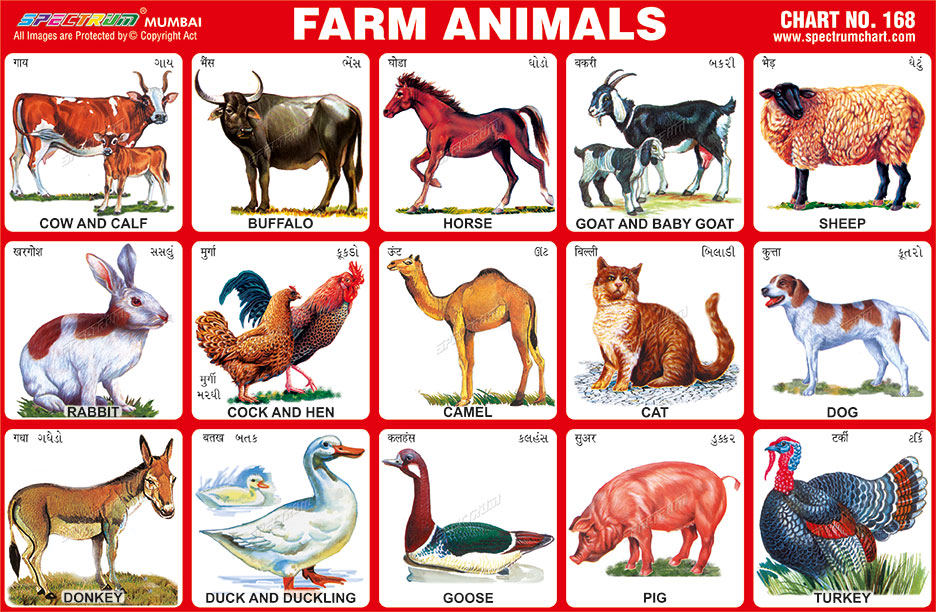The importance of classification of farm animals cannot be overemphasized; according to the rules of the Food and Agriculture organization of the United Nations, it is necessary to calculate and classify domestic animals. So let`s take a look at the types of farm animals that you need to know!
Farm animals, also known as livestock, play a crucial role in our lives. They are not just sources of food, but they also serve for various recreational and medicinal purposes. One fascinating example is hippotherapy, a therapy that uses horses to help individuals heal from psychological wounds. This highlights the diverse roles that these animals can fulfill beyond mere production.
Farm animals encompass a variety of species, including camels, sheep, goats, chickens, donkeys, horses, pigs, and mules, among others. The production of these animals varies significantly based on the country, local climate, and cultural practices. Understanding this classification helps in managing and utilizing these animals effectively.
Moreover, farm animals provide us with an array of products. Cows, for instance, are vital for their milk and meat. Different cultures have distinct traditions regarding animal husbandry. While dogs are commonly considered pets in many countries, in some regions of China, they are raised for consumption. This diverse perspective underscores the importance of understanding how classifications can differ across cultures.
Exploring the Definition of Farm Animals
Determining what qualifies as a farm animal can be complex, as it varies greatly from one culture to another. Many people assume that farm animals must live on farms, but this is not universally true. For example, Bedouins rear camels for their meat, milk, fur, and bones, even without conventional farms. This cultural nuance is key to understanding how we define and interact with livestock.
In this article, let's delve into the most popular livestock animals and the regions where they are primarily found. By exploring various types of farm animals, we will uncover the significance they hold in agriculture and everyday life.
Popular Types of Farm Animals
Alpacas
Alpacas were domesticated about seven thousand years ago and are primarily reared for their fiber and meat. These animals are especially valued in the textile industry for their soft and durable wool.
Addax
These mammals, found in Egypt, are raised for their meat and hides. The addax is well adapted to desert environments and plays a role in the local ecosystem.
Bali Cattle
Bali cattle are a domestic species reared for both meat and milk. They are known for their strength and adaptability to various farming conditions.
Bison
Bison, large animals that became domestic in the 19th century, are now primarily reared for their meat and leather. They are a symbol of the American West and play a significant role in sustainable farming practices.
Camel
Domesticated around six thousand years ago, camels are utilized for their hair, meat, and milk. They are integral to the livelihoods of many communities in arid regions.
Cattle
Cattle are perhaps the most common farm animals worldwide, raised for their meat, milk, and horns. They are a staple of agricultural economies in many countries.
Capybara
This large rodent, native to South America, is raised for its skin and meat. Capybaras are social animals often found in groups near water bodies.
Collared Peccary
These animals are popular in Brazil and are raised for their hide, tusks, and meat. They are often seen in wild and semi-domesticated settings.
Deer
Deer are raised for their meat, leather, and antlers. They are an important part of many rural economies and ecosystems.
Donkey
Donkeys serve as draught animals and are also raised for their meat and skin. They are known for their strength and endurance.
Eland
Elands are large antelopes raised for their meat, hides, leather, and horns. They are known for their adaptability to various environments.
Elk
Elk, often kept in captivity, are used for their meat, hides, and leather. They are majestic creatures that contribute to both ecological diversity and agricultural practices.
Gayal
This animal, native to Southeast Asia, is reared for leather, meat, wool, and milk. Gayals have a significant cultural and economic impact in their native regions.
Goat
Goats are perhaps the most versatile farm animals, used for various needs including milk, meat, and fiber. They are hardy animals that thrive in diverse environments.
Horse
Horses have been companions to humans for about six thousand years and are commonly used as draught animals in many cultures.
Mule
A mule, a hybrid of horse and donkey, is an excellent draught and riding animal, valued for its strength and endurance.
Pig
Pigs are raised globally for their meat. They are intelligent animals that play an important role in many farming systems.
Sheep
Sheep are primarily reared for their wool, which is highly prized in the textile industry, but they also provide a good source of meat.
Rabbit
Rabbits are kept as pets and also raised for their fur and meat. They are easy to care for and breed quickly, making them popular among small-scale farmers.
Yak
Yaks are large animals used for their meat, milk, and fur, particularly in the Himalayan regions where they serve as essential livestock.
Poultry
Poultry includes chickens, ducks, turkeys, and other birds raised for meat and eggs. Many people also keep these birds as pets.
Final Thoughts
Each animal listed above has its unique role in agriculture and human society. They provide essential products and services, making them invaluable assets to farming communities. Today, humans have domesticated a wide variety of animals, including exotic ones like crocodiles and zebras, showcasing our diverse agricultural practices.
Understanding the classification and uses of farm animals is crucial for effective animal husbandry and sustainable agriculture. By recognizing the cultural variations in animal rearing, we can appreciate the global diversity of livestock and their contributions to our lives.
Source: Legit.ng




